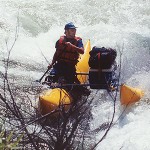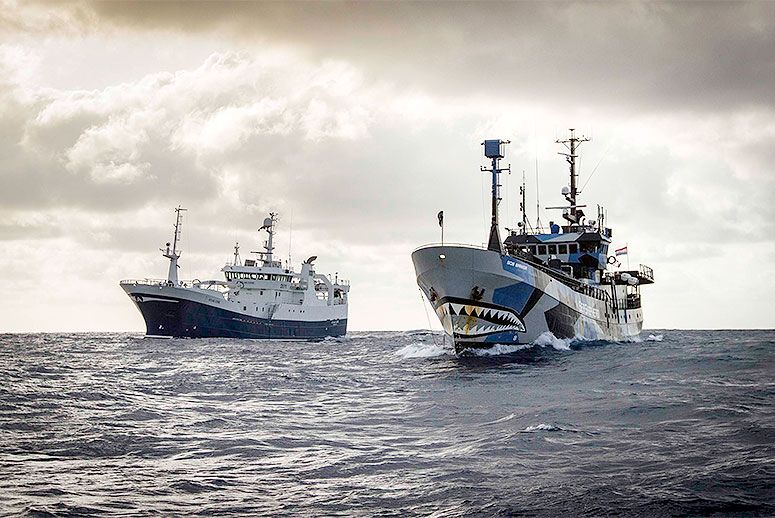Comments Reviews on theboatpeople.com Raft Cataraft Inflatable Kayak Products and Service › Forums › Environmental News › Sea Shepherd Is Hunting the Last of the World’s Most Notorious Poaching Vessels
- This topic has 0 replies, 1 voice, and was last updated 8 years, 2 months ago by
 Lee Arbach TBP.
Lee Arbach TBP.
-
AuthorPosts
-
February 10, 2016 at 7:39 pm #2951
 Lee Arbach TBPKeymaster
Lee Arbach TBPKeymaster
Sea Shepherd’s hunting of poaching vessels in the remote Southern Ocean is not as well known as its efforts to stop Japanese whale hunters, but for one species it’s a lifesaver.
The deep-sea-dwelling Patagonian toothfish that inhabits the region has been a lucrative target for illegal fishing. Six vessels, which Sea Shepherd has dubbed the Bandit 6, have been raking in big bucks skirting international fishing regulations. The ships are capable of catching more than $1 million worth of toothfish—popularly known as Chilean sea bass—before returning to port.
AdvertisementThe boats have operated mostly unencumbered in the remote expanse of the Southern Ocean, often avoiding capture by flying under “flags of convenience” that hide the vessel’s ownership and make prosecution difficult. The Commission for the Conservation of Antarctic Marine Living Resources has put the ships on its blacklist.
A toothfish—known as ‘white gold’ by poachers—caught in an illegal gill net. (Photo: Jeff Wirth/Sea Shepherd Global)“What made them stand out was their brazen return to Antarctica, year after year, in spite of being repeatedly spotted by customs vessels and other legal operators,” said Sid Chakravarty, captain of the Sea Shepherd vessel Steve Irwin. “We realized that the vessels were deliberately exploiting the loopholes in international law and acting with a purpose, fully aware of the immunity they enjoyed.”
RELATED: That Chilean Sea Bass You Just Ordered Isn’t a Bass and Probably Didn’t Come From Chile
Related
Sea Shepherd to Pay Millions to Whale KillersBut thanks in part to Sea Shepherd’s two-year-long “Operation Icefish” campaign, only one vessel of the Bandit 6 is still in operation. Officials in Senegal on Tuesday detained the Kunlun, a toothfish-poaching vessel Sea Shepherd has been pursuing for more than a year.
In February 2015, Chakravarty, who was then captain of the Sea Shepherd’s vessel San Simon, chased the Kunlun for eight days out of Australian fishing waters. The boat was fishing with illegal gill nets that drag along the seabed, capturing and killing fish indiscriminately.
Sid Chakravarty, captain of the Sam Simon. (Photo: Paul Petch/Sea Shepherd Global)A month later, the Kunlun showed up at a dock in Phuket, Thailand, trying to off-load 182 tons of toothfish the ship was reporting as grouper fish. The vessel escaped customs after five months in port and showed up in Senegal in February, renamed the Asian Warrior.
“It is incredibly satisfying to know that the Kunlun, which was chased out of the Southern Ocean by my vessel in February 2015, has been unable to resume its illegal fishing operations,” Chakravarty said. “The work done by Sea Shepherd completes and at times fills the gaps in the work of governments, which are restricted by outdated legal conventions.”
The poaching vessel the Viking is wanted for a decade’s worth of illegal fishing in the Southern Ocean. (Photo: CCAMLR)
The capture of the Kunlun leaves the poaching vessel the Viking as the lone bandit on the high seas.
AdvertisementAccording to Sea Shepherd, the Viking is suspected to be fishing in Antarctica, once again using banned gill nets in the region. Chakravarty and the crew of the Steve Irwin are searching for the Viking.
“Once the vessel is located, the role of the [Sea Shepherd] is twofold,” Chakravarty said. “One, to afford immediate protection to marine wildlife by blockading the illegal operations of the Viking, and two, to embark on a pursuit of the vessel and work with international law enforcement agencies to ensure the vessel is detained upon arrival in port. Using the evidence collected, Sea Shepherd’s aim is to aid and assist ongoing investigations with regards to the Viking.”
That plan worked in 2014, when Sea Shepherd Capt. Peter Hammarstedt and the crew aboard the 788-ton Bob Barker embarked on a 110-day, 10,000-nautical-mile ocean pursuit of the Nigerian-flagged boat Thunder, which was illegally fishing in the Southern Ocean.
The Thunder, considered the most notorious poaching vessel among the Bandit 6, ended up sinking at sea, with the crew and captain rescued by Sea Shepherd. In October 2015, the Thunder’s captain and two senior crew members were found guilty of multiple charges of illegal fishing, given 32 to 36 months of jail time, and fined more than $17 million by a court in São Tomé and Príncipe—an island nation that lies off the west coast of Africa in the Gulf of Guinea.
The poaching vessel the Thunder sinks as Sea Shepherd vessels watch from a safe distance. (Photo: Simon Ager/Sea Shepherd Global)“The aim of this mission is to locate [the Viking] and replicate the successes of the previous missions and to deliver a final blow to the illicit toothfish trade,” Chakravarty said.
http://www.takepart.com/article/2016/02/10/sea-shepherd-bandit-6-poaching-illegal-fishing
-
AuthorPosts
- You must be logged in to reply to this topic.
- Click to share on Facebook (Opens in new window)
- Click to share on Twitter (Opens in new window)
- Click to share on LinkedIn (Opens in new window)
- Click to share on Pinterest (Opens in new window)
- Click to share on Tumblr (Opens in new window)
- Click to share on Reddit (Opens in new window)
- Click to share on Pocket (Opens in new window)
